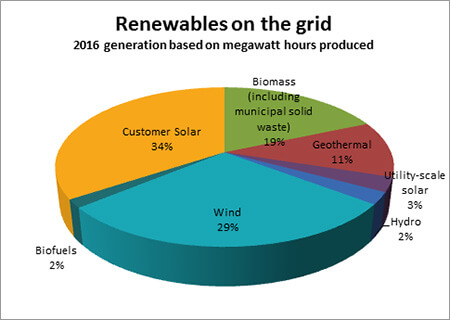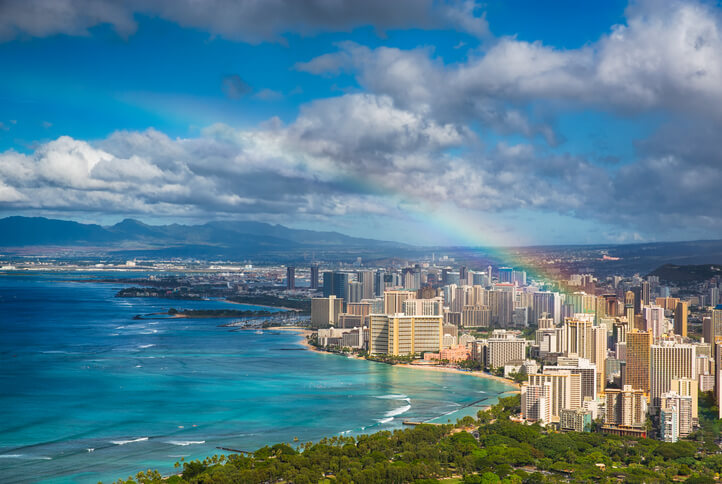To mark Earth Day 2017, Hawaiian Electric is highlighting its progress in replacing fossil fuels with renewable energy and reducing greenhouse-gas emissions.
The company, including subsidiaries Maui Electric and Hawaii Electric Light, provides power to 95% of residents on five of Hawaii’s six main islands.
Importantly, Hawaiian Electric reached a milestone last year when 26% of the electricity used by its customers came from renewable energy – up from 23% the year before.
Many of Hawaiian Electric’s ambitious clean energy goals are described in its Power Supply Improvement Plan, which was submitted to the Public Utilities Commission in December. The plan calls for reducing operations that use fossil fuels, doubling the number of private rooftop solar systems and aggressively seeking grid-scale renewable resources, among other goals.
Regionally in 2016, Hawaii Island customers’ use of renewable electricity passed the halfway mark for the first time: 54% of electricity came from renewables, compared with 49% in 2015. Maui County also reached a new high of 37%, up from 35% the year prior. On Oahu, 19% of electricity used by customers was from renewable resources, up from 17% the year before.
From 2008 to 2016, Hawaiian Electric’s use of oil in generators on Oahu fell to 6 million barrels from 7.8 million barrels. Across the company’s entire service territory, oil use fell to 8.5 million barrels from 10.7 million barrels – representing a 21% decrease.
In other emissions-reducing milestones, the number of registered plug-in electric vehicles (EVs) has broken the 5,000 mark in the state – making Hawaii second in the nation after California in EVs per capita, according to Hawaiian Electric.
Hawaiian Electric’s Power Supply Improvement Plan also forecasts exceeding the state’s renewable energy milestones of 30% in 2020, 40% in 2030, 70% in 2040 and 100% by 2045.
The utility’s forecasts for future milestones now include 48% by the end of 2020, 72% by the end of 2030 and 100% by the end of 2040 – five years ahead of the 2045 deadline.





There is the Puna Geothermal Venture 38 MW power plant on the Big Island. It’s operational history has been fraught with technical problems, cave-ins, and toxic H2S hydrogen sulfide releases.
https://www.hawaiianelectric.com/clean-energy-hawaii/clean-energy-facts/renewable-energy-sources/geothermal/puna-geothermal-venture-(pgv)
http://khon2.com/2016/01/12/epa-finds-puna-geothermal-venture-violated-chemical-safety-rules/
Why doesn’t Hawaii use Geo-Thermal?
What with the Big Island being active and the entire chain being upthrusts, could they drill down a bit,
run some cold seawater into wells, then use the ocean to generate power?
Even if only the Big Island can be used, they could generate DC and send that power
around to the other islands.
Apparently they haven’t really looked at this in a while, seems like
The Big island should be all Geothermal, wind, solar and the smaller islands should be
aiming to get as much solar and wind as possible.